-
CATEGORY ::
- All Seeds /
- All Flower Seeds
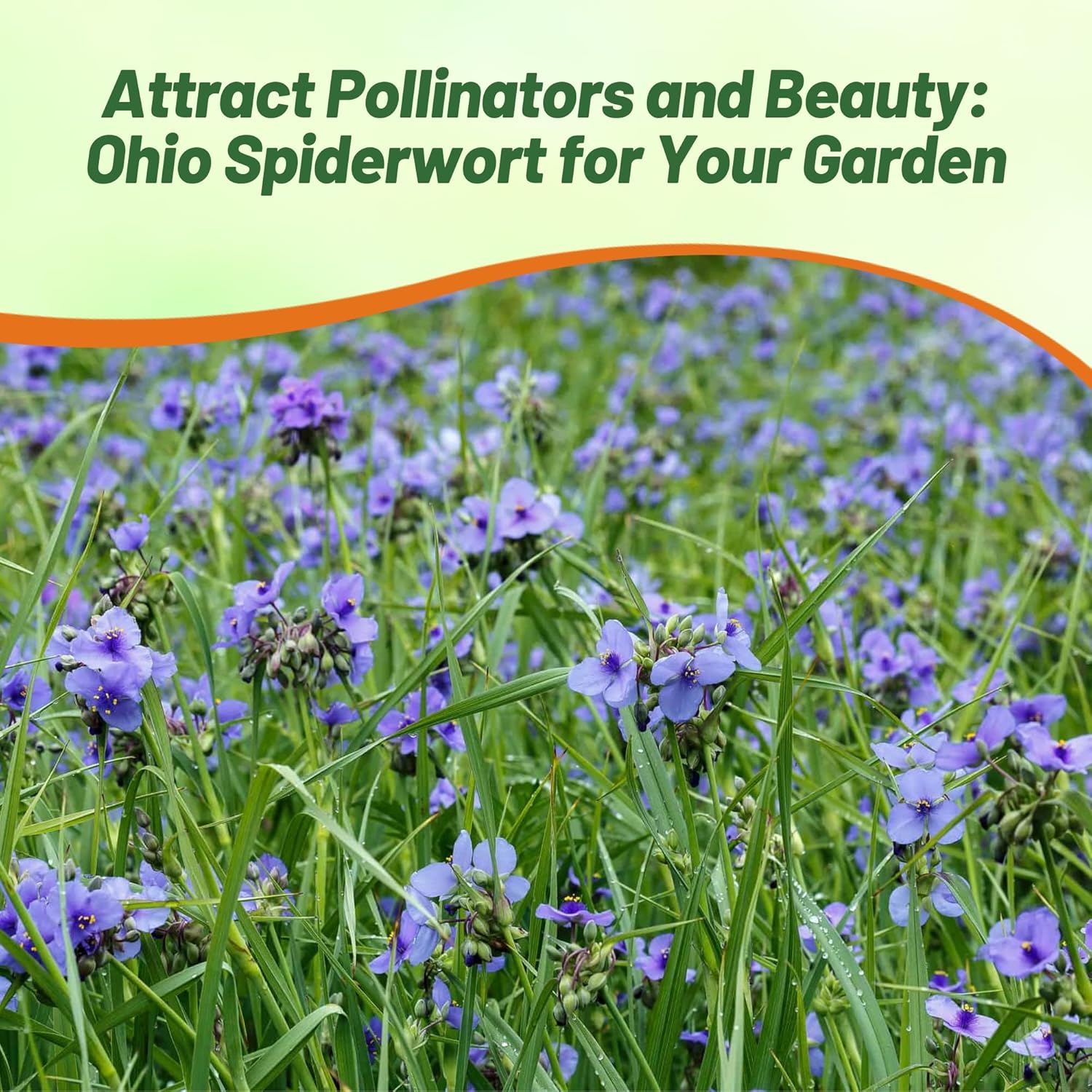

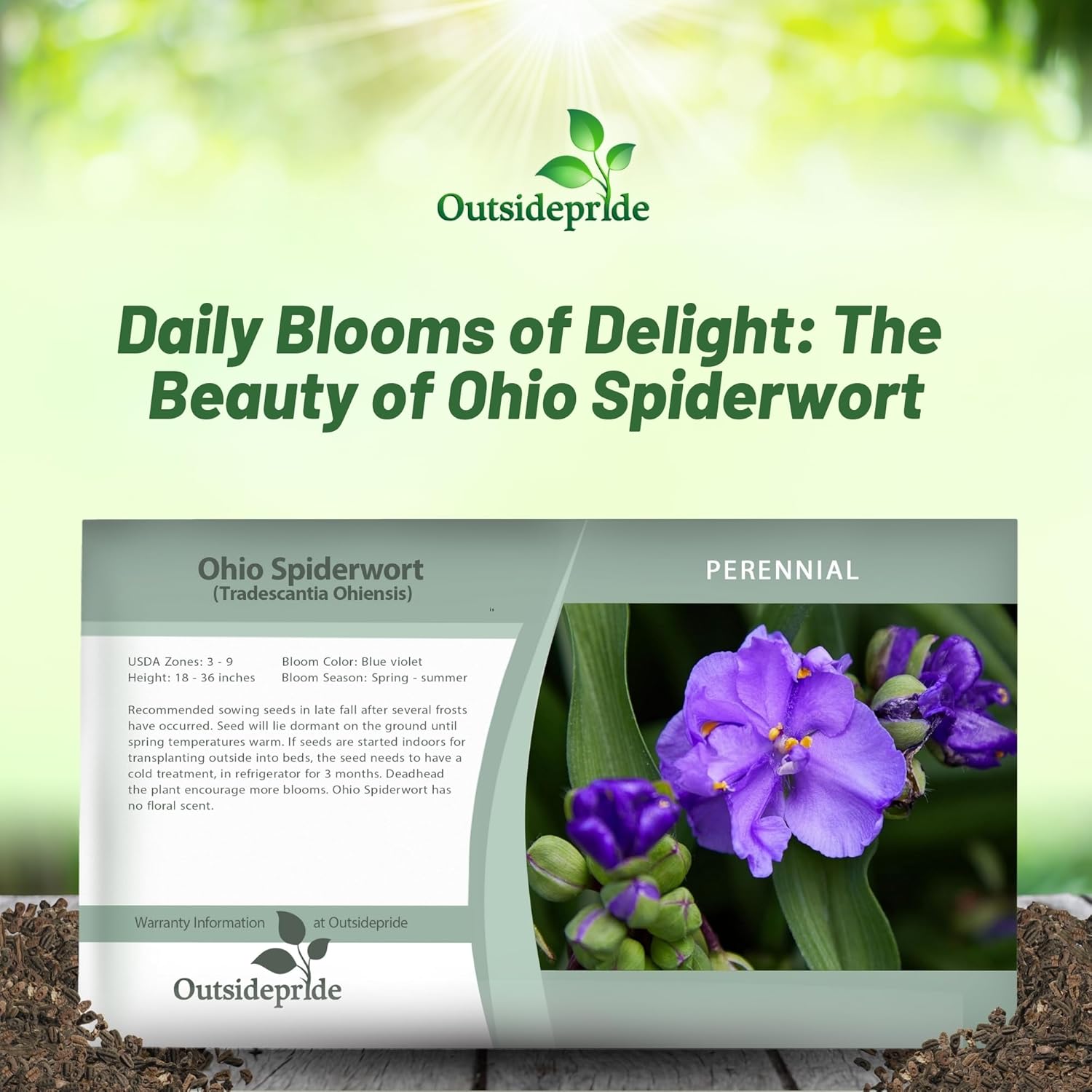
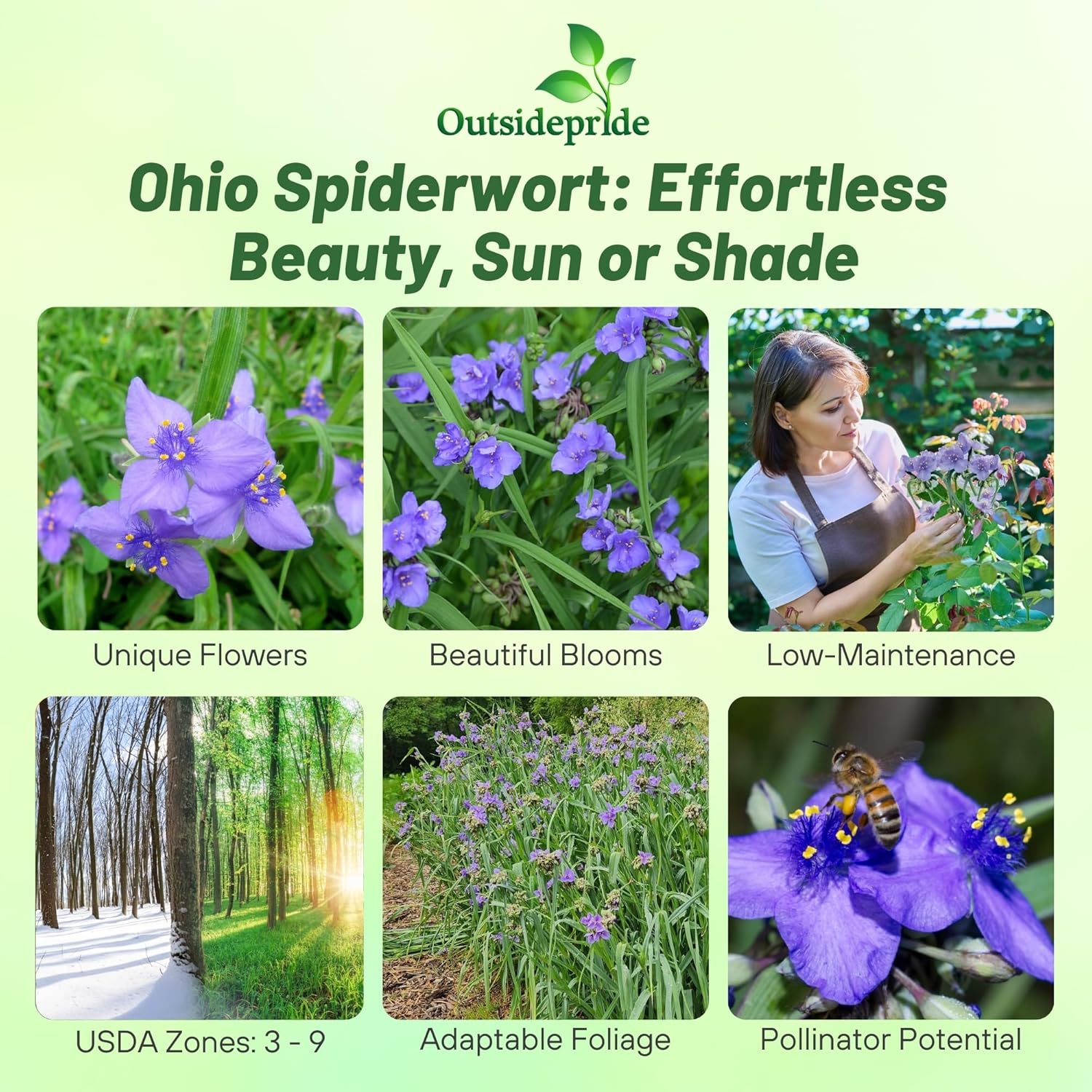

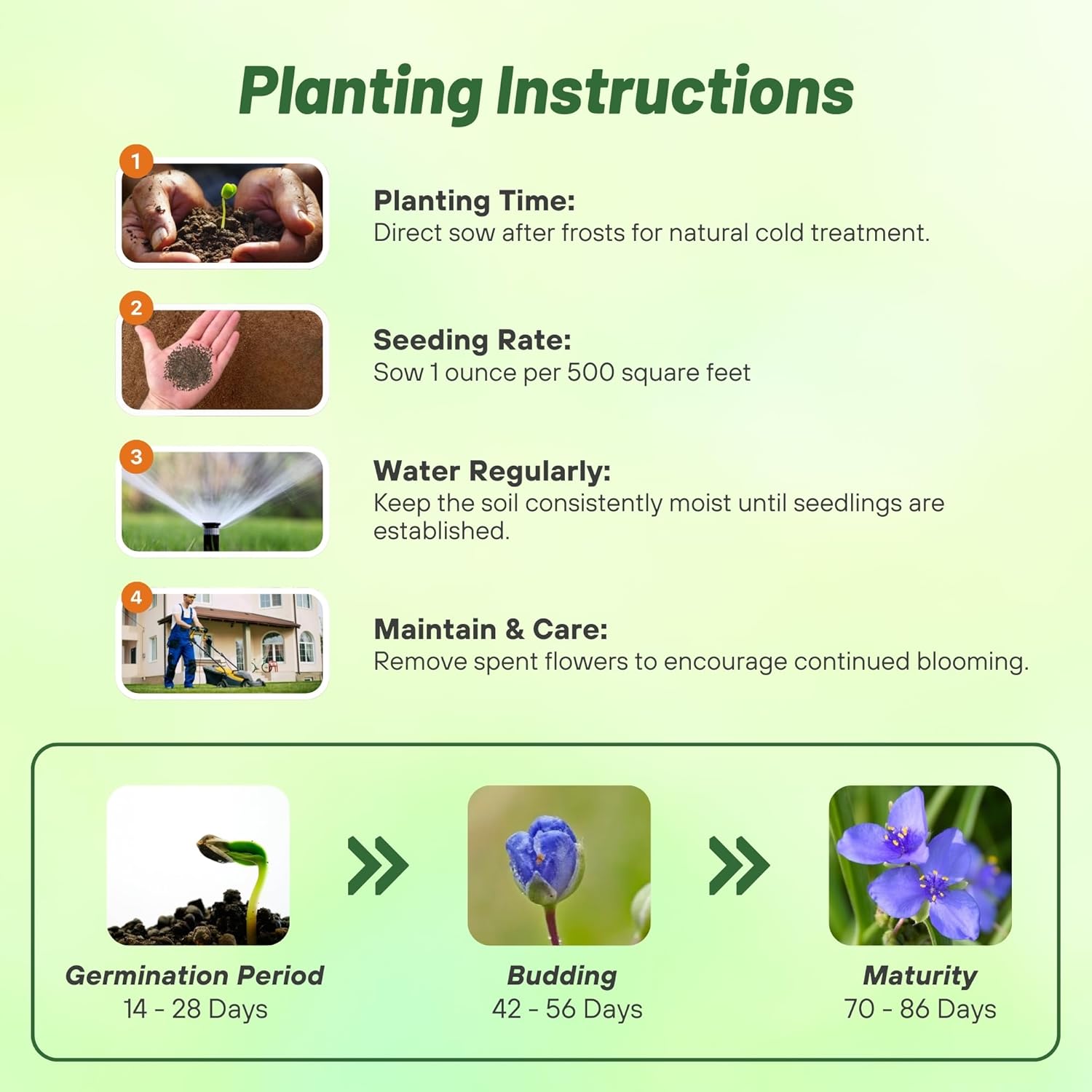


Ohio Spiderwort Seeds
SEASON
Perennial
USDA ZONES
3 - 9
HEIGHT
18 - 36 inches
BLOOM SEASON
Spring and summer
BLOOM COLOR
Blue violet
ENVIRONMENT
Full sun to partial shade
SOIL TYPE
Clay, loam, sandy, pH 6.6 - 7.5
DEER RESISTANT
Yes
FOLIAGE COLOR
Green-blue
LATIN NAME
Tradescantia ohiensis
SEASON
Perennial
USDA ZONES
5 - 10
HEIGHT
10 inches
BLOOM SEASON
Spring through winter
BLOOM COLOR
Mix
ENVIRONMENT
Partial shade
SOIL TYPE
Well-drained, pH 6.1 - 7.5
DEER RESISTANT
Yes
HOUSE PLANT
Yes
LATIN NAME
Sinningia speciosa
SEASON
Annual
USDA ZONES
4 - 10
HEIGHT
6 - 8 inches
BLOOM SEASON
Mid spring to late summer
BLOOM COLOR
Mix
ENVIRONMENT
Full sun
SOIL TYPE
Best in rich, well drain soil
DEER RESISTANT
No
LATIN NAME
Leptosiphon hybrida
SEASON
Perennial
USDA ZONES
7 - 11
HEIGHT
28 inches
BLOOM SEASON
Spring to fall
BLOOM COLOR
Rosy purple
ENVIRONMENT
Full sun to partial shade
SOIL TYPE
Well drained soils, pH 6.6 to 7.5
DEER RESISTANT
Yes
SEASON
Perennial
USDA ZONES
7 - 11
HEIGHT
4 inches
WIDTH
12 - 18 inches
BLOOM SEASON
Early spring to early fall
BLOOM COLOR
Pink
ENVIRONMENT
Full sun to partial shade
FOOT TRAFFIC
Light
DEER RESISTANT
Yes
SEASON
Annual
USDA ZONES
3 - 11
HEIGHT
100 - 140 inches
BLOOM SEASON
Late spring to late summer
BLOOM COLOR
Mix
ENVIRONMENT
Full sun
SOIL TYPE
Well drained, pH 6.6 - 7.5
DEER RESISTANT
No
HOUSE PLANT
No
SEASON
Annual
USDA ZONES
4 - 9
HEIGHT
12 inches
BLOOM SEASON
Late summer to early fall
BLOOM COLOR
Mix
ENVIRONMENT
Full sun
SOIL TYPE
Moist, well-drained, pH 6.6 - 7.3
DEER RESISTANT
Yes
SEASON
Perennial
USDA ZONES
9 - 11
HEIGHT
120 inches
BLOOM SEASON
Mid summer to late fall
BLOOM COLOR
Orange, red, yellow
ENVIRONMENT
Full sun
SOIL TYPE
Sandy, well drained soil, pH 5.5 - 7.5
DEER RESISTANT
Yes
LATIN NAME
Mina lobata
About...
Ohio Spiderwort (Tradescantia Ohiensis) - A versatile perennial grown from Ohio Spiderwort seeds is one of the few flowers that you can plant in full sun to partial shade depending on what features you like the best. The drought resistant Ohio Spiderwort plant grows best in light to moderate shade for dark green foliage or in full sun for more flowers.MORE FLOWER OPTIONS
Planting Directions
TEMPERATURE
65F
AVERAGE GERM TIME
14 - 21 days
LIGHT REQUIRED
Yes
DEPTH
1/8 - 1/4 inch
SOWING RATE
1 ounce per 500 square feet
MOISTURE
Keep seeds moist until germination
PLANT SPACING
8 - 18 inches

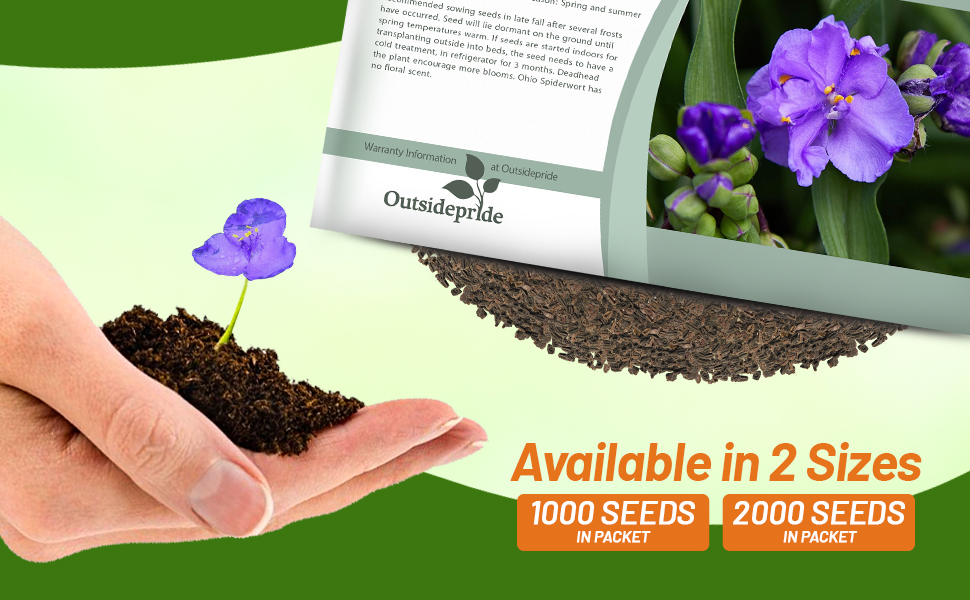
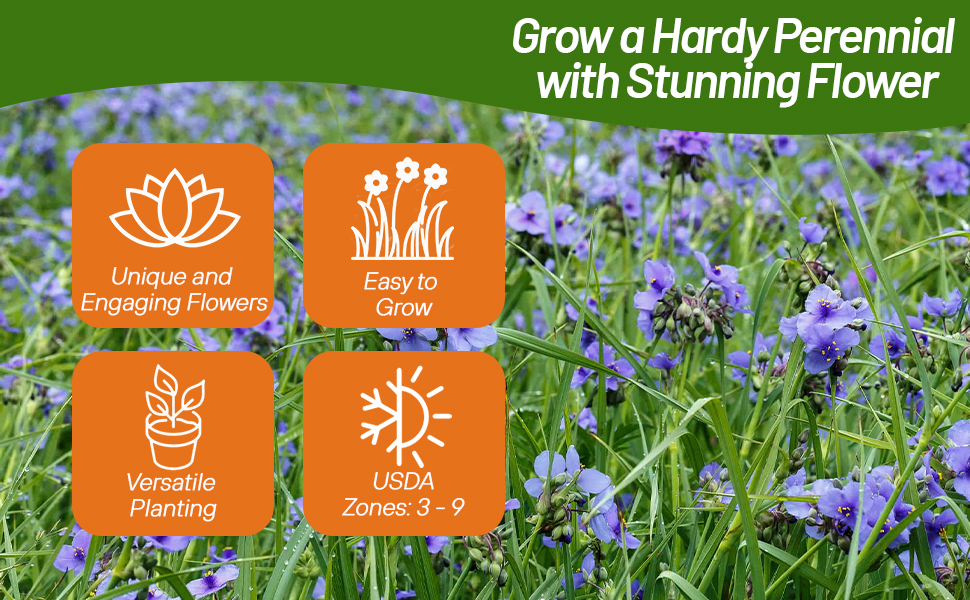
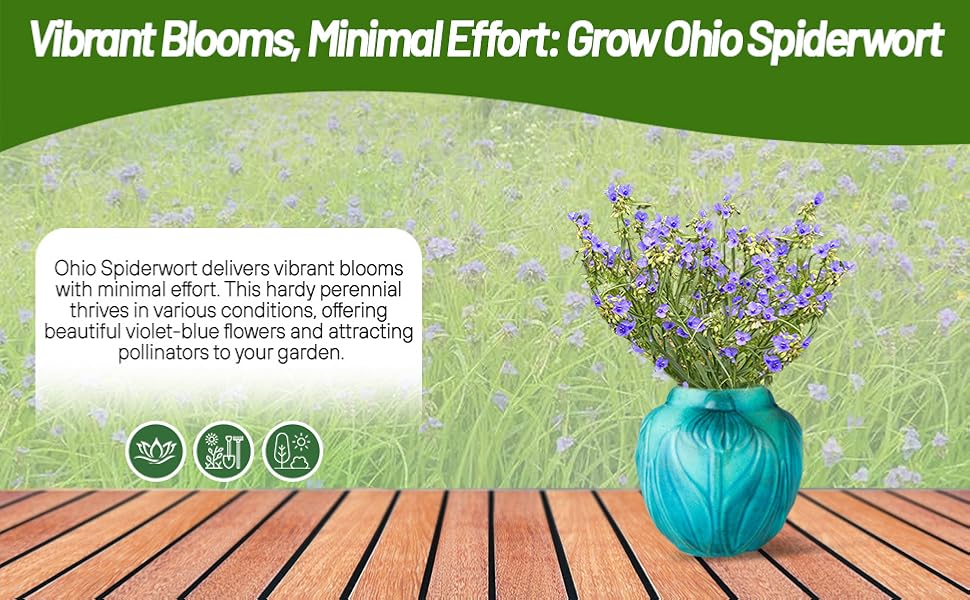
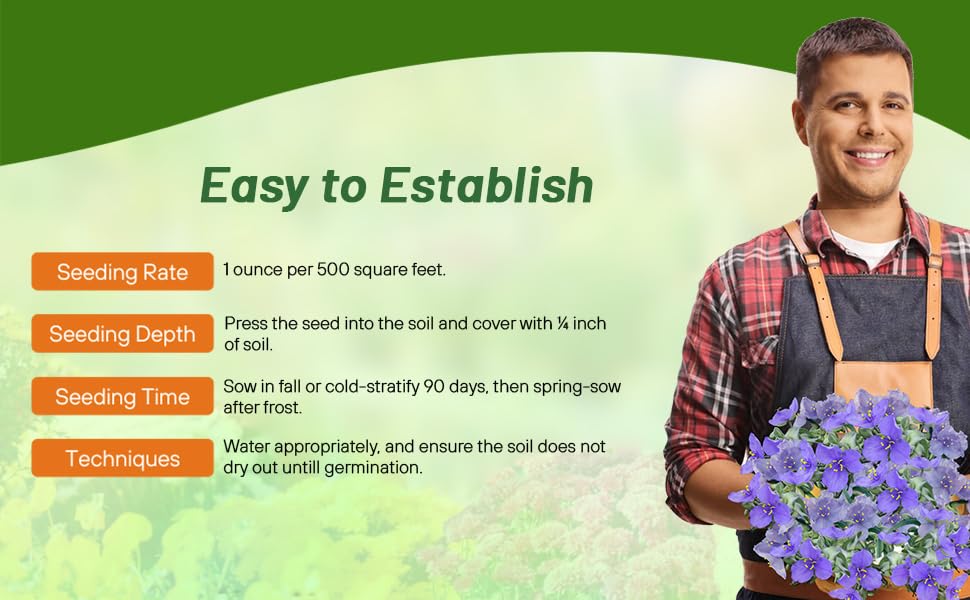
Ohio Spiderwort (Tradescantia Ohiensis) - A versatile perennial grown from Ohio Spiderwort seeds is one of the few flowers that you can plant in full sun to partial shade depending on what features you like the best. The Ohio Spiderwort drought resistant plant grows best in light to moderate shade for dark green foliage or in full sun for more flowers. Tradescantia Ohiensis Spiderwort is a smooth erect perennial with flowers in clusters atop a stem. The blooms are 3 petaled, blue or violet with 6 yellow tipped stamens.
Tradescantia Spiderwort plant is a native wild flower occurring naturally in open woods, prairies, and meadows east of the Rocky Mountains. Ohio Spiderwort is not common in the western United States; however, it can be successfully established from flower seeds. Once established, it is an aggressive spreader and self-sows for additional blooms each year. The flowers open up during the morning and close by the afternoon in sunny weather.
A recommended method of sowing Ohio Spiderwort seeds is to sow the flower seed in the late fall after several frosts have occurred. The flower seed will lie dormant on the ground until spring temperatures warm. If Tradescantia Ohiensis seeds are started indoors for transplanting outside into beds, the flower seed needs to have a cold treatment, in the refrigerator for 3 months. Deadhead the Tradescantia Spiderwort plant encourage more blooms. Ohio Spiderwort has no floral scent. Tolerates drought, shallow, rocky soils.
Approximately 8,000 seeds per ounce.
Common Questions
Can I grow tradescantia in a container?
Yes, tradescantia works well in containers.
Is tradescantia a good pollinator plant?
Yes, bees are attracted to these flowers.
Should I deadhead my tradescantia?
Yes, to encourage more blooms you will want to deadhead your flowers.
Does tradescantia seed itself?
A single plant is self-sterile, but if there is another tradescantia nearby, they will produce seed and self sow.
What are some recommended companion plants?
Swamp milkweed and rudbeckia are good companion plants for Ohio spiderwort.
Do I need to divide my plants.
Yes, divide plants every 3 to 4 years to prevent overcrowding.
Planting Directions
TEMPERATURE
70 - 75F
AVERAGE GERM TIME
21 - 28 days
LIGHT REQUIRED
Yes
DEPTH
Do not cover the seed but press into the soil
SOWING RATE
4 seeds per plant
MOISTURE
Keep seed moist until germination
PLANT SPACING
10 inches
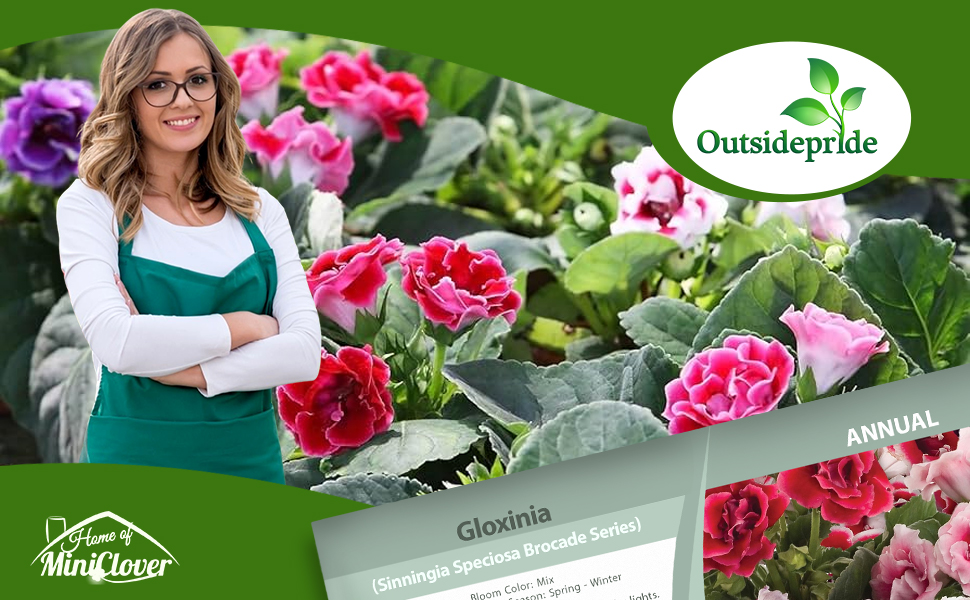
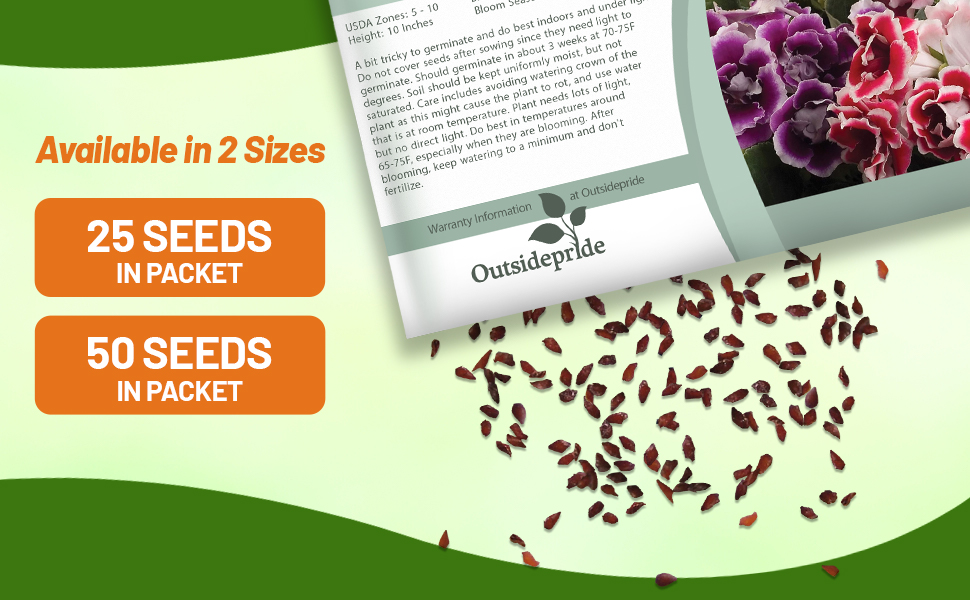
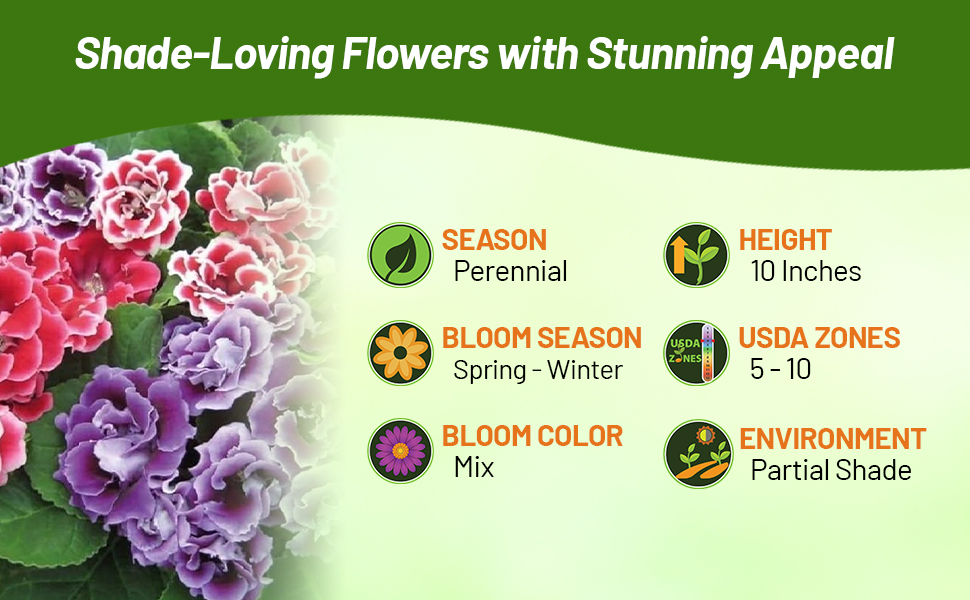
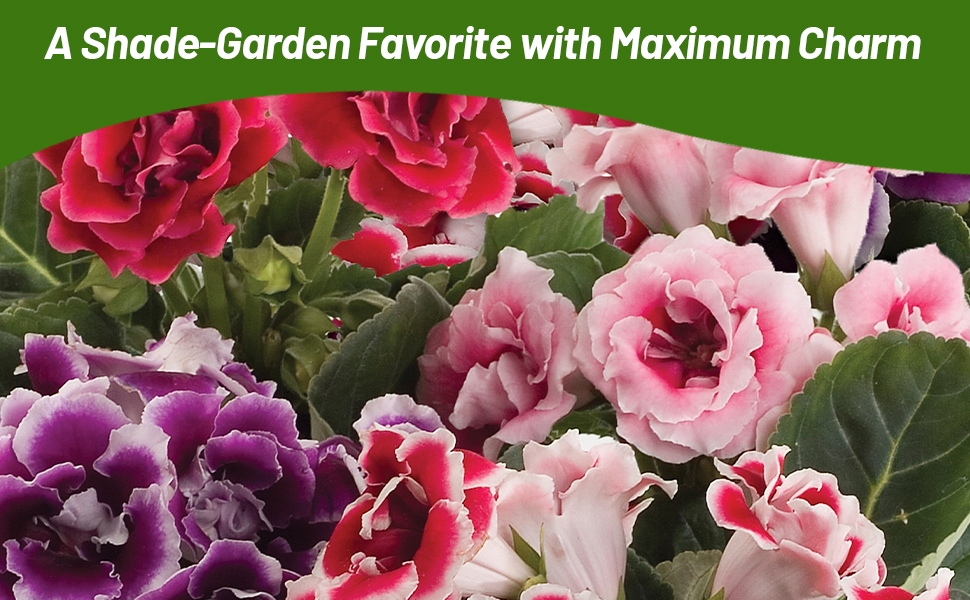
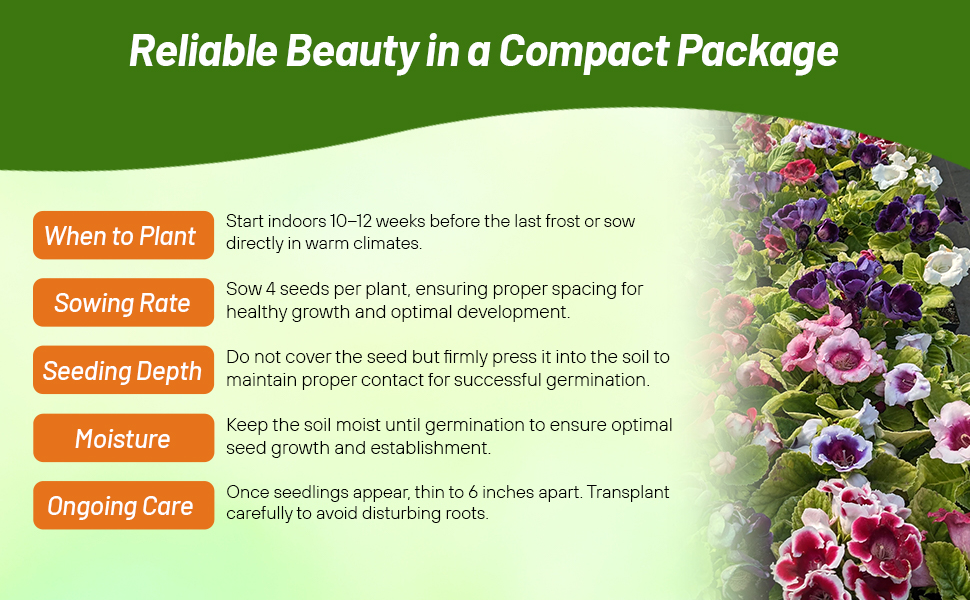
Gloxinia (Sinningia Speciosa Brocade Series) - Sow Gloxinia seeds to produce a beautiful mixture of red, blue, and white blooms. These compact Gloxinia plants blossom four to six months after sowing. They will flower for about 2 months, go dormant for about 2 months, and then begin growing again and start flowering. Gloxinias make a great house plant, giving wonderful, colorful blooms! Sinningia Speciosa is often referred to as Florist's Gloxinia or Brazilian Gloxinia.
Gloxina seeds are a bit tricky to germinate and do best indoors and under lights. Do not cover the flower seeds after sowing since they need light to germinate. Sinningia Speciosa seeds should germinate in about 3 weeks at 70 - 75F degrees. Soil should be kept uniformly moist, but do not keep it saturated. Florist's Gloxinia care includes avoiding watering the crown of the plant as this might cause the plant to rot, and use water that is at room temperature for watering. The Brazilian Gloxinia plant needs lots of light, but no direct light. Gloxinias do best in temperatures around 65 - 75F degrees, especially when they are blooming. After blooming, keep watering to a minimum and don't fertilize.
Common Questions
Do I need to prune my gloxinia?
To encourage a longer bloom season, you will need to deadhead your spent flowers. After the bloom period is over and your plant enters dormancy, prune back any dead or dying foliage.
My leaves are dropping, what do I do?
This can occur from sudden temperature changes such as drafts.
My leaves look scorched, why?
Direct sunlight can burn the leaves of your gloxinia, causing them to scorch and crisp.
My flowers are losing their vibrancy, what do I do?
This is typically caused by inadequate light move your plant to an area with more light but not direct sunlight.
Planting Directions
TEMPERATURE
55 - 65F
AVERAGE GERM TIME
14 - 21 days
LIGHT REQUIRED
Yes
DEPTH
Surface sow seed and light cover no more than 1/8 inch deep
SOWING RATE
3 - 5 seeds per cell or approximately 5000 seeds covers 100 square feet
MOISTURE
Keep seeds moist until germination
PLANT SPACING
8 inches
Leptosiphon Mix (Leptosiphon Hybrida French Hybrids Mix) - Start Leptosiphon seeds to start these dainty little flowers. Leptosiphon French Hybrids has the synonymous botanical name Linanthus androsaceus. This low-growing annual has fern-like foliage and hundreds of sweet little half inch star-shaped flowers that shine out from the foliage. The colors are mixed and bright in shades of rose, yellow, orange and cream. Leptosiphon uses include edging the front of the flower bed, containers, edging a pathway, or as a ground cover. Commonly known as False Baby Stars, this annual is lovely if it is allowed to spill over the edges of rocks or containers. It makes a carpet of color and is stunning!
Grow Leptosiphon seeds directly outside in a prepared seedbed after frost danger has passed. Press the flower seed into the soil and lightly cover. False Baby Stars flowers perform best in full sun, and they prefer rich, well-draining soil.































